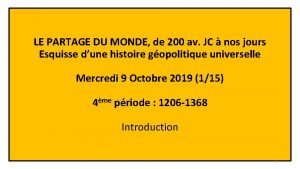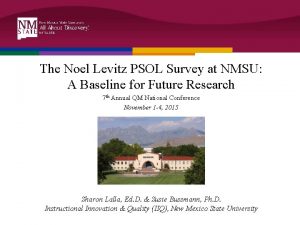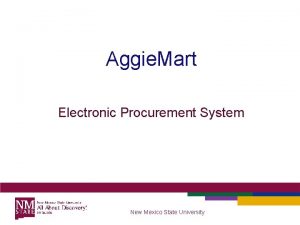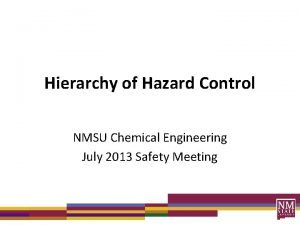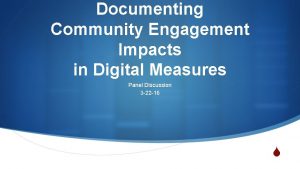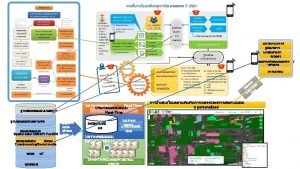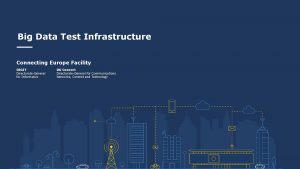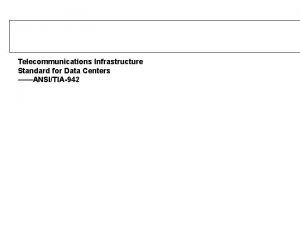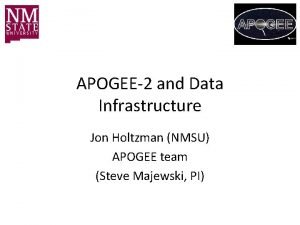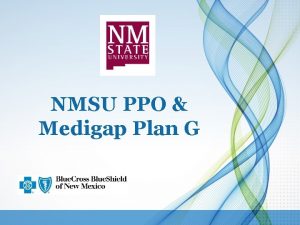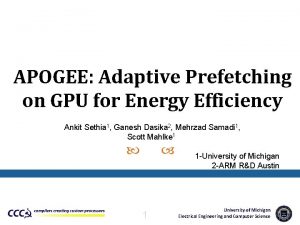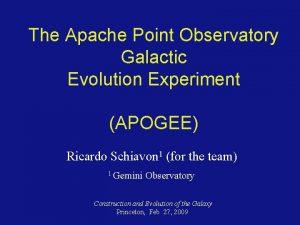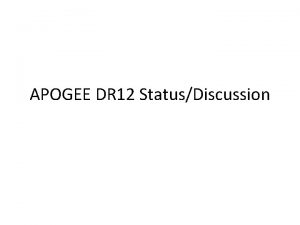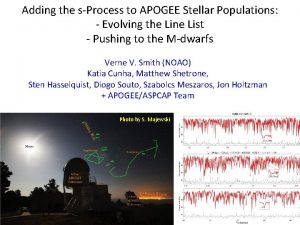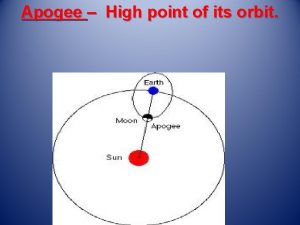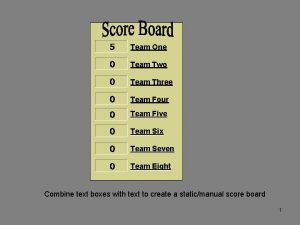APOGEE2 Data Infrastructure Jon Holtzman NMSU APOGEE team















- Slides: 15

APOGEE-2 Data Infrastructure Jon Holtzman (NMSU) APOGEE team

Data infrastructure – Data infrastructure for APOGEE-2 will be similar to that of APOGEE-1, generalized to multiple observatories, and with improved tracking of processing – APOGEE raw data and data products are stored on the Science Archive Server (SAS) – Reduction and analysis software is (mostly) managed through the SDSS SVN repository – Raw and reduced data described (mostly) through SDSS datamodel – Data and processing documented via SDSS web pages and technical papers

Raw data – APOGEE instrument reads continuously (every ~10 s) as data are accumulating, 3 chips at 2048 x 2048 each • Raw data are stored on instrument control computer (current capacity is several weeks of data) • Individual readouts are “annotated” with information from telescope and stored on “analysis” computer (current capacity is several months). These frames are archived to local disks that are “shelved” at APO (currently 20 x 3 TB disks) – “quick reduction” software at observatory assembles data into data cubes and compresses (lossless) for archiving on SAS • Maximum daily compressed data volume ~ 60 Gb

Raw data Does not include NMSU 1 m + APOGEE data LCO data will be concurrent Total 2. 5 m raw data to date: ~11 TB

Initial processing • “quick reduction” software estimates S/N (at H=12. 2) which is inserted into plate database for use with autoscheduling decisions • APOGEE-1 – Data transferred to SAS next day, transferred to NMSU later that day, processed with full pipeline following day, updated S/N loaded into platedb, initial QA inspection • APOGEE-2 proposal: – Process data at observatory with full pipeline next day, or at SAS location (Utah) and/or – Improve “quick reduction” S/N

Pipeline processing • Three main stages (+1 post-processing) – APRED : processing of individual visits (multiple exposures at different detector spectral dither positions) into visit-combined spectra, with initial RV estimates. Can be done daily – APSTAR: combine multiple visits into combined spectra, with final RV determination. • For APOGEE-1, has been run annually (DR 10: year 1, DR 11: year 1+year 2) – ASPCAP: process combined (or resampled visit) spectra through stellar parameters and chemical abundances pipeline • For APOGEE-1, has been run 3 times – ASPCAP/RESULTS: apply calibration relations to derived parameters, set flag values for these

APOGEE data products • • • Raw data: data cubes (ap. R) Processed exposures (maybe not of general interest? ) – 2 D images (ap 2 D) – Extracted spectra (ap 1 D) – Sky subtracted and telluric corrected (ap. Cframe) Visit spectra – Combine multiple exposures at different dither positions – ap. Visit files: native wavelength scale, but with wavelength array Combined spectra – Combine multiple visits, requires relative RVs – ap. Star files: resampled spectra to log(lambda) scale Derived products from spectra – Radial velocities and scatter from multiple measurements (done during combination) – Stellar parameters/chemical abundances from best-fitting template • Parameters: Teff, log g, microturbulence (fixed), [M/H], [alpha/M], [C/M], [N/M] • Abundances for 15 individual elements – aspcap. Star and aspcap. Field files: stellar parameters of best-fit, pseudo-continuum normalized spectra and best fiitting templates Wrap-up catalog files (all. Star, all. Visit)

APOGEE data volume Raw data: • 2. 5 m+APOGEE: ~4 TB/year APOGEE-1 ~6 TB/year with Ma. NGA co-observing • 1 m+APOGEE: ~2 TB/year • LCO+APOGEE: ~3 TB / year TOTAL APOGEE-1 + APOGEE-2 : ~75 TB Processed visit files: ~ 3 TB/year (80% individual exposure reductions) Processed combined star files: ~500 GB/100, 000 stars Processed ASPCAP files: raw FERRE files ~500 GB/100, 000 stars Bundled output: ~100 GB / 100, 000 stars TOTAL APOGEE-1 + APOGEE-2 (one reduction!): ~ 40 TB

APOGEE data access “Flat files” available via SDSS SAS: all intermediate and final data product files summary ``wrap-up” files (catalog) “Catalog files” available via SDSS CAS: apogee. Visit, apogee. Star, aspcap. Star Spectrum files available via SDSS API and web interface Planning 4 data releases in SDSS-IV: DR 14: July 2017 (data through July 2016) DR 15: July 2018 (data through July 2017 – first APOGEE-S) DR 16: July 2019 (data through July 2018) DR 17: Dec 2020 (all data)

APOGEE software products • apogeereduce: IDL reduction routines (apred and apstar) • aspcap • speclib: management of spectral libraries, but not all input software (no stellar atmospheres code, limited spectral synthesis code) • ferre: F 95 code to interpolate in libraries, find best fit • idlwrap: IDL code to manage ASPCAP processing • apogeetarget: IDL code for targetting

APOGEE pipeline processing • Software all installed and running on Utah servers • Software already in pipeline form (few lines per full reduction step to distribute and complete among multiple machines/processors) • Some need to improve distribution of knowledge and operation among team • Some external data/software required for ASPCAP operation • Generation of stellar atmospheres (Kurucz and/or MARCS) • Generation of synthetic spectra (ASSET, but considering MOOG and TURBOSPECTRUM)

APOGEE software/personnel • apogeereduce • developer: Nidever, Holtzman, (Nguyen) • operation: Holtzman, (Hayden, Nidever, Nguyen) • ASPCAP • grids: • ASSET: Allende Prieto / Koesterke • Turbospec: Zamora, Garcia-Hernandez, Sobeck, Garcia. Perez, Holtzman • MOOG: Shetrone, Holtzman (pipeline), others • speclib • postprocessing: Allende-Prieto, Holtzman • ferre: Allende Prieto • idlwrap: Holtzman, Garcia-Perez (Shane) • Operation: Holtzman (Shane, Shetrone)

END


Abundances of cooler stars Second instrument or first instrument relocation Surface gravity issues: red clump vs red giant Abundance analysis of faint bulge stars: RR Lyr and RC stars Achieving distance distribution
 Empire mongol apogée
Empire mongol apogée Bureaucratic bypass syndrome
Bureaucratic bypass syndrome Team spirit becomes team infatuation
Team spirit becomes team infatuation The white team cheers for the blue team, just like
The white team cheers for the blue team, just like Nmsu irb
Nmsu irb Nmsu blackboard
Nmsu blackboard Nmsu orientation
Nmsu orientation Nmsu housing address
Nmsu housing address Aggiemart
Aggiemart Chemical engineering nmsu
Chemical engineering nmsu Nmsu pay levels
Nmsu pay levels Nmsu digital measures
Nmsu digital measures Nmsu scholar dollar
Nmsu scholar dollar Big data infrastructure
Big data infrastructure Big data test infrastructure
Big data test infrastructure Telecommunications infrastructure standard for data centers
Telecommunications infrastructure standard for data centers
